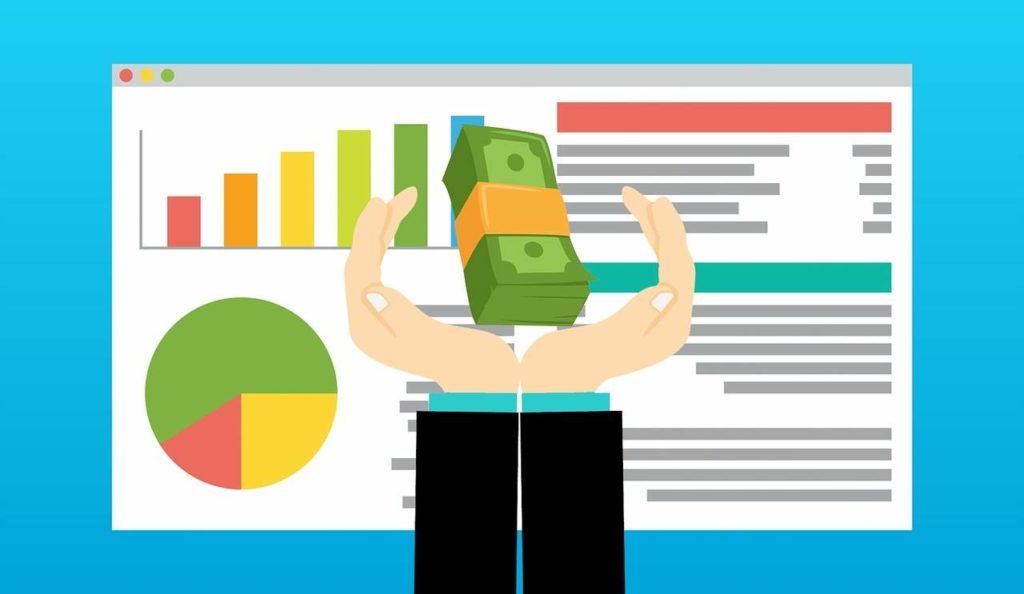Financial Budgeting and Forecasting with their Meaning, Distinction, Difference, and also Process; Planning is the most important factor in business success. A good plan not only helps companies focus on the specific steps needed to successfully implement their ideas but also helps managers achieve both short-term and long-term goals. Financial forecasts and financial budgets are two of the most important planning tools in modern organizations. Used properly, financial forecasting and budgeting ensure that an organization always has enough cash on hand for the things that are most important to its short and long-term success.
Here is the article to explain, the Distinction or Difference between Financial Budgeting and Forecasting with their Meaning and also Process
Understand the difference between financial forecasting and financial budgeting; Unfortunately, the two terms are often confused or even used interchangeably. This hesitation is a mistake. While forecasting and budgeting are essential to an organization’s planning process, they are significantly different. This article summarizes the distinction between the two processes. A budget calculates how much money your company will make and how much it will spend over a certain period of time. Simply put, a budget lists fixed and variable costs and how the money coming into the business distribute.
Forecasts use historical and recent transaction data; as well as industry and market information, to determine how budgets for expected costs will distribute over a given period of time. Forecasting increases the confidence of the management team in making important business decisions. Budgeting and financial forecasting have unique goals, but they work well together. While budget details await future results, forecasting focuses on probable future events to inform whether the company will achieve the goals set in the budget. To use the common analogy that a budget is a shared map, forecasting and budgeting is something like Waze or any map app on your phone. Budgeting is the map, and forecasting provides the tools to help you adjust how you reach your goals.
What does it mean to have financial budgeting?
Budgeting is the process of making a plan for how you will spend your business money for a certain period of time (months, quarters, years, etc.). The budget estimates your company’s income and expenses for this period. Budgets periodically reassess and adjust – in most cases quarterly. The budget is a quantitative expectation of what the company wants to achieve. Its characteristics are:
- A budget is a detailed representation of the future results, financial position, and cash flow that management wants to achieve over a certain period of time.
- The budget can only update once a year depending on how often management wants to review the information.
- Budgets compare with actual results to find deviations from expected results.
- Management takes corrective action to bring actual results within budget.
- Comparison of budget versus actual may result in changes in compensation based on results paid to employees.
What are the five types of budgets?
There are five types of budgets that companies usually create to run a business.
- Creating a static budget created by the department and accounting for fixed costs is often the first step in the budgeting process. A static budget remains unchanged, even if parts of the company, such as sales, change.
- The articles of association cover all company departments. This budget prepare every fiscal year. The general budget provides revenues, expenses, operating expenses, sales, investments, and other items used in financial statements.
- A financial plan is a company’s strategy for managing its assets, cash flow, income, and expenses. For example, when a company plans to go public or undertake mergers and acquisitions, it creates a financial budget to determine or represent its value.
- The operating budget estimates revenues and expenses from ongoing operations, including cost of goods sold and sold, general and administrative expenses.
- Finally, a cash flow budget makes assumptions about the inflows and outflows of funds over a period of time.
Why is the budget important? Budgets can be short-term or long-term. They keep the company on track by setting cost parameters and comparing expected results with actual. By providing goals, they provide a company’s goals to pursue and a framework for responsible implementation.
What does it mean to have a financial forecast?
Financial forecasting is different from budgeting. It reviews budget targets and, along with market and industry analysis, provides preliminary information to predict whether the expected targets will achieve. These forecasts help finance professionals and line managers see if the company will meet budget expectations – and give them the information they need to make adjustments if they’re not on track. Prognosis is an estimate of what will actually achieve. Its characteristics are:
- Estimates usually limit to important items of income and expenses. As a rule, there is no forecast of financial condition, although cash flows can predicte.
- Forecasts update regularly, perhaps monthly or quarterly.
- Forecasts can use for short-term operational considerations such as staff adjustments, inventory levels, and production schedules.
- No analysis of variance compares estimates with actual results.
- Changes in forecasts do not affect yield-based compensation paid to employees.
Why are forecasts important? Financial forecasts ensure that business units have the resources needed to meet the company’s needs – almost all organizations produce quarterly financial forecasts. However, a new customer loss or an external event such as a pandemic can significantly affect the accuracy of quarterly forecasts. Mobile companies incorporate mobile forecasting to create ongoing process planning rather than quarterly events. These companies can then better respond to the fast-growing market while avoiding the surprises of their regular quarterly forecasts.
How to know? Which comes first, the budget or the forecast?
Budgets and forecasts have to work together – you set goals; others provide an idea of whether they can and will achieve. Forecasting can use to help budget or understand how money should allocate to specific areas of the company. But without a budget, forecasts have no real purpose.
Comparison of budgets and forecasts;
The main difference between a budget and a forecast is that a budget establishes a plan for what the company is trying to achieve, whereas an estimate sets out expectations of actual results, usually in a much more generalized format. In other words, a budget is a plan for where the company wants to go, whereas a forecast is an indication of where it really is. In fact, the most useful of these tools are forecasts because they are a short-term representation of the real world that is happening in the business.
The information in the forecast can use for immediate action. On the other hand, a budget may contain goals that are completely unattainable or whose market conditions have changed so much that it is not advisable to fulfill them. If the budget is to use, it must update at least once a year so that it is in line with the current market realities. The last point is especially important in a rapidly changing market where the assumptions used to create a budget can become out of date in a matter of months. In short, businesses always need forecasts to show them their current direction, while budgeting is not always necessary.
The main distinction or difference between the two financial processes is budgeting and forecasting;
Now that we have a better understanding of the two processes, we can more easily summarize the differences. There are five main differences or distinctions between the two:
Definition;
Financial forecasts are forecasts for trends and financial results based on historical data. A financial budget, on the other hand, is a statement of the estimated income and expenses during the budget period.
Purpose or Destination;
Financial forecasts quantify future business activities, revealing where the organization is going for a given period of time. A financial budget, on the other hand, measures a tactical plan that represents what the organization’s management wants to achieve during the budget period.
Duration or Timing;
Forecasts are usually made for the long term. While you may occasionally find short-term projections that may cover a quarter, most projections last several years. In comparison, budgets cover a shorter period of time. A typical budget covers a fiscal year.
Flexibility;
Financial forecasts are very flexible. They regularly adapt to changing assumptions and changes in the operating environment. On the other hand, budgets are more static. Once created, the budget only adjusts if the initial assumptions have changed.
Application;
Forecasts are a strategic tool that companies use to plan their growth over several years. While the budget is a tactical tool used to manage operations during the reporting period. It should also note that while budgets can use to analyze differences between actual and expected results, forecasts are only estimates; do not provide a counter with which to compare.
Final thoughts on financial forecasting vs financial budgeting;
Businesses need to start taking financial forecasting and budgeting seriously. However, if you use the two terms synonymously or even confuse them; there is a risk that one will not use but the other. This is a dangerous precedent. Also, You cannot have one without the other; You cannot create an effective budget without good estimates, and vice versa, You need both.
What is the budgeting and forecasting process?
There are four types of budget processes – incremental, activity-based, value proposition, and zero.
- Step-by-step budgeting is the most common method. Subtract numbers from the previous period and add or subtract percentages to prepare a budget for the current period, according to the Institute of Corporate Finance. The incremental budget procedure base on the idea that a new budget can develope by making slight changes to the current budget. For example, today’s budget can be used as a basis for adding or subtracting additional assumptions to the base amount to determine a new budget amount. It’s good practice if your company’s key cost drivers don’t change every year; but, it doesn’t take into account whether some departments really need more or less money to meet current-period goals.
- Activity-Based Budgeting (ABB) sets goals and determines what inputs and activities are needed to achieve those goals. ABB is a budgeting method in which a budget is created based on activity-related costs (ABC). It contains 3 types of information: activities to carries out for next year, number of activities and cost of activities. For example, a car wash plans to ship 12,000 washes over the next year, and the shipping costs are $5 per wash. The activity-based budget for this initiative is $60,000 (12,000 * 5).
- That’s exactly what Value Proposal Budgeting does. It checks whether everything in the budget brings added value to the company and whether each line creates added value for customers, employees, or other stakeholders.
- Zero-based budgeting lives up to its name – every department starts from scratch and must create a budget from scratch, ignoring any resources and costs it currently has. Managers must justify each position in the budget.
Details;
Any budgeting method has value depending on what the company wants to achieve and where it is on its growth path. Zero budgeting, for example, is a good tool for companies that need tight cost control. The value proposition of budgeting provides valuable practice for businesses that are just starting in funding.
The forecast includes current and historical transaction data and market conditions to help determine whether budget targets will be met. Take, for example, a monthly sales forecast that includes information on inventory levels, changes in customer habits, and news on competitor activity along with data on actual sales over time. By combining this real-world sales data with sales forecasts and budget targets, companies can confidently make the necessary changes in their approach to sales, marketing, and more to ensure their goals are met.
The best way to improve your budgeting and forecasting;
Budgeting and forecasting allow companies to plan their fiscal year precisely. Here are 10 ways you can improve this process to create a strategic plan that meets your company’s financial goals.
Maintain flexible budgeting and forecasting;
Tough forecasts and budgets are not very useful. Things change throughout the years and you should be able to consider these changes and how they will affect your business. Continuing to make decisions based on the best assumptions made months in advance can lead to wrong and costly decisions. In addition, adherence to indicators based on outdated information by employees is counterproductive and frustrating. Embedding flexibility in your budgeting and forecasting allows for greater accuracy and better results in your business.
Implementation of current forecasts and budgets;
You can update current forecasts and budgets based on current results, not what managers think might have been done months ago. This process provides forecasts for the next quarter, not the whole year. Forecasts are broader every quarter as they are updated again. Mobile estimates allow you to better align your budget with your plans while increasing the accuracy of your estimates.
Budget for your plan;
Make a plan and incorporate it into your budget. Budgeting as part of your plan “requires spending decisions based on actual income, not opportunities that those expenses may (or may not) generate. Rather than spending it and dealing with it later, budgeting your plan forces you to look at the potential impact of all costs on your business. Using this method of budget management is especially useful when considering options that weren’t part of your original budget.
Communicate early and often;
Since forecasting and budgeting cover every aspect of the business; you want to maintain open communication with all departments throughout the process to minimize problems and ensure consistency between your company’s operational and organizational strategies.
Involve your entire team;
Budgeting and forecasting should be a team effort so that departments and units better understand their needs. Except for the people in your finance department; while the people at the pulse in various departments can give you the data you need to make accurate estimates and set realistic budgets. In addition, by using your entire team, you can have multiple perspectives on your company’s current and future position.
Be clear about your goals;
The purpose of forecasting is to predict the financial future of your company. Forecasting helps you make business decisions and understand their implications before you implement them. Unless you know your company’s overall goals, your ability to accurately predict your company’s financial future will fluctuate. Therefore, you need to know exactly what is driving your predictions. Otherwise, it’s just a random assumption not based on your company’s goals.
Plans in different scenarios;
You can’t plan everything out, but you do have an idea of some of the obstacles that could affect your initial financial forecasts and financial budgets. Review external markets and economic trends that could adversely affect your business. Current forecasts help you stay informed about negative or positive changes that could seriously impact your business. Moving forecasts also allow you to rotate as needed based on the data just submitted; so all decisions are based on what’s happening now rather than what happened last year.
Track everything;
When budgeting and forecasting for the coming financial year, everything has to take into account, regardless of whether it’s a possible purchase from a competitor or just office supplies. Don’t underestimate the importance of seemingly inconsequential details and their ability to jeopardize a company’s financial health. Once the budget is set, make projections that take into account the many potential scenarios that may arise. Keep an eye on market trends, customer behavior, and competition as business forecasts are finalized.
Include profit and cash flow objectives;
Author Jean Siciliano says, “Every budget should have a profit target and a cash flow objective; because, the two extreme measures are very different and require different attention to controlling them”. If you’re not tracking these two key metrics for your business; how useful and accurate will your budget be? To keep your business from missing out on your financial goals, set realistic goals for your cash flow and profit.
Release Excel;
Don’t rely on Excel or other spreadsheet programs to create your budgets and estimates. Planning software can make many processes easier and less time-consuming. Cloud systems are quickly becoming the standard for all areas of finance, not just accounting services. When used, this option allows for more flexibility as well as greater security and cost savings than the manual option. They allow you to create accurate estimates and budgets quickly and with minimal errors.
















